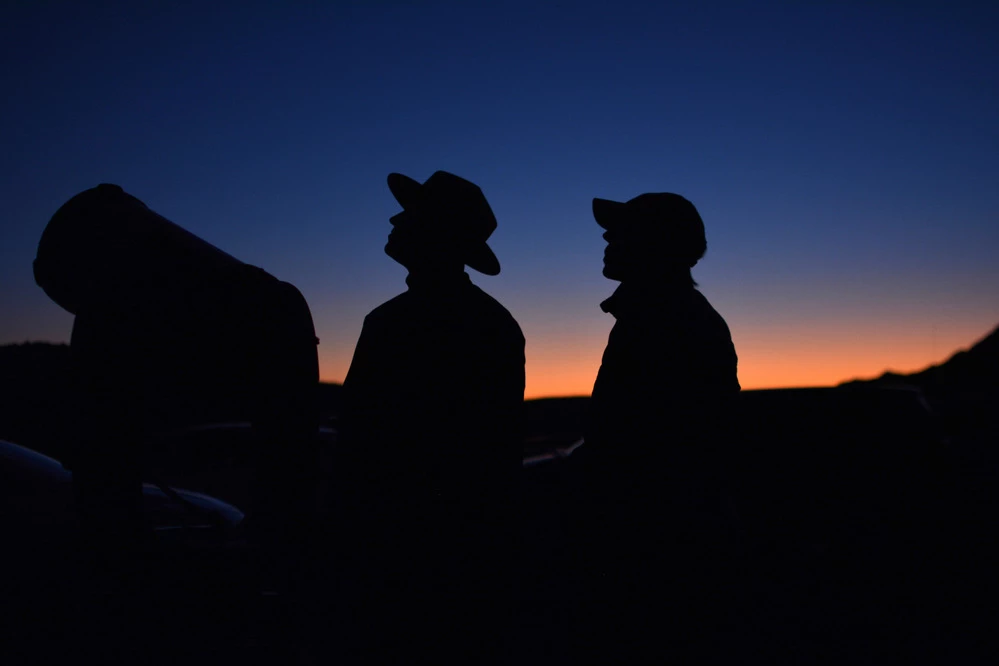
NPS
"If we really believe that these places belong to the American public—'find your park,' this is your park—then we can’t always be speaking for them or to them. It really needs to be collaborative. And we’re a long ways from completely figuring out what that means."
Listen
-
Episode Seven: The Evolution of Interpretation in the NPS
In conversation with Rebecca "Becky" Lacome. How do interpretive rangers create safe spaces to explore challenging issues of our times?
- Credit / Author:
- NPS
- Date created:
- 03/13/2020
The Evolution of Interpretation in the National Park Service
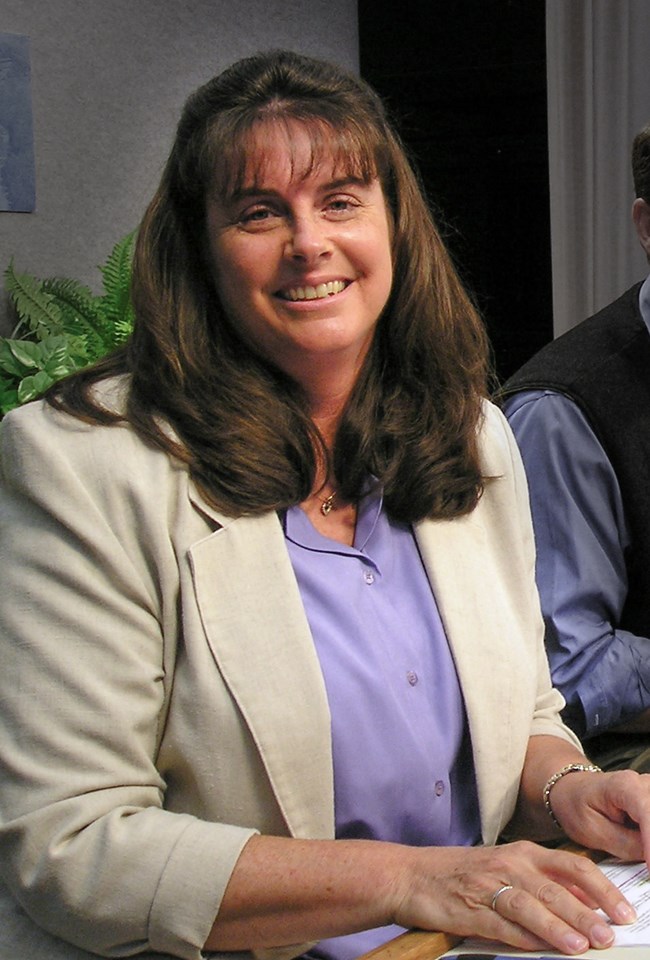
NPS
LU ANN JONES (HOST): When you visit a national park, the rangers are easy to spot: grey shirt, green pants, tan flat hats. But there’s one type of park personnel that you’ll probably spend the most time with: the interpretive rangers.
They’re the park service storytellers.
Their job is to communicate to visitors the meanings of artifacts, events, and landscapes through the act of interpretation.
Interpretation is a practice, but it’s also a philosophy -- and one that is always evolving.
I’m National Park Service historian, Lu Ann Jones. And you’re listening to “A Sense of Place: Stories of Stewardship from the National Park Service.” In this series, we’re diving into the oral history archives, to bring you the stories of the people who shaped the parks, and the Service.
Today: Connecting people to parks through interpretation.
Becky Lacome was 13. She was hiking with her scout troop in the Sierra Nevada. They had stopped on the trail and listened in to the park ranger’s talk. And then it struck her: maybe someday she could do this, too.
BECKY LACOME (NARRATOR): When I had that epiphany at 13, I think I later realized when I was in college that it was a spiritual gift. That it was a calling. It was my personal mission.
JONES: She got her first permanent Park Service job in 1986 at Mammoth Cave in Kentucky -- it’s the longest known cave system in the world. It was about 400 miles of surveyed, underground caverns.
LACOME: The only way to see Mammoth Cave was on a guided tour, and so we had to have a huge interpretive guide force. It’s a tradition there, there were many multigenerational cave guides and seasonals, many of whom were teachers during the year, and came back to do their first love of cave guiding in the summer. A lot of tradition. Steeped in tradition.

NPS
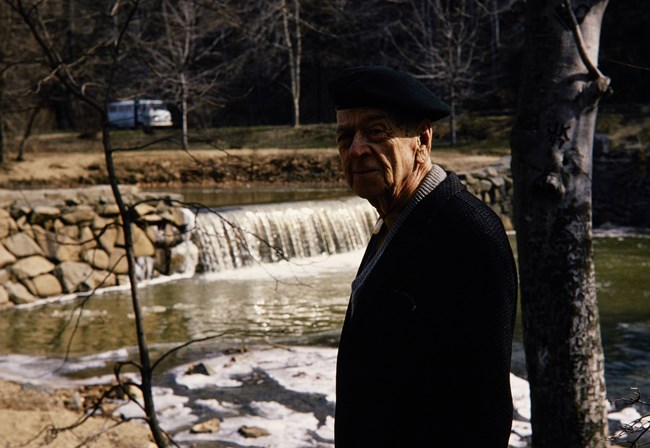
NPS / Wilber "Bud" E. Dutton (Harpers Ferry Center Archives)
JONES: When Lacome began her career, the NPS had long been tackling the question: what was the most effective way to communicate with visitors about what they were seeing?
In the 1950s, a man by the name of Freeman Tilden became one of the first people to articulate the principles of what we call “heritage interpretation.”
Tilden’s goal: Help NPS visitors to connect. Encourage them to care. Tilden promoted the idea: “Through interpretation, understanding; through understanding, appreciation; through appreciation, protection.” Through engagement, he insisted, would come a love for the land: environmental and cultural stewardship.
LACOME: It was always assumed if we did that well, people would care about national parks and support us in preservation just by learning more about these places.
JONES: During the 1960s and 1970s, park visitation soared and the number of park units grew. But slim budgets had reduced the ranks of interpreters, and opportunities for career advancement for interpretive rangers stalled out.
Becky was lucky. By the time she joined the NPS, interpretation was coming out of its slump. Energetic new leaders began to focus on interpretation as a practice and a profession. In the 1980s, the first formal training program was called Interpretive Skills.
Yet certain assumptions shaped NPS interpretation philosophy: the interpreter was the expert -- and visitors were simply passive listeners.
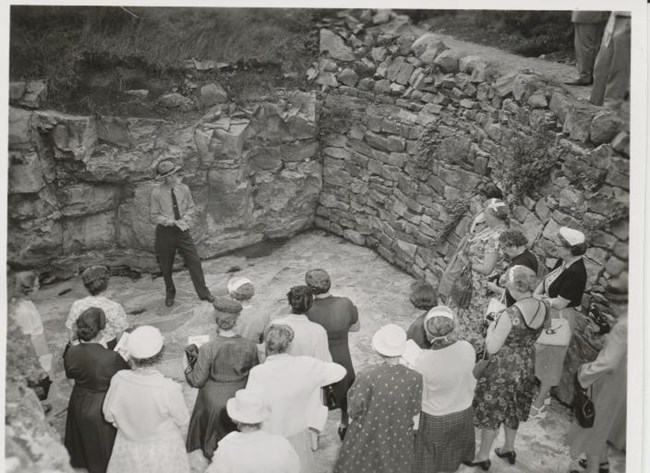
NPS
LACOME: It was very much about the interpreter, the park ranger, as the authority, the source of the knowledge, the font of knowledge for the public. It was largely a one-way communication strategy. But then that was the way people were taught and learned at the time. That’s the way I grew up learning. The teacher. The lecturer.
JONES: Interpretive talks were pretty formulaic.
LACOME: One thing that they actually taught us which now we laugh about, the mantra was, “Tell them what you’re going to tell them. Have a good theme. Introduce that theme. Tell them what you’re going to tell them. Then tell them. That’s the body of your presentation. That’s all your facts and information and stories. And then tell them what you told them.” In other words, recapitulate. Put a bow on it. And a nice conclusion.
JONES: But new ideas were brewing. The Service was on the cusp of what was being called an “interpretive revolution.”
In the 1990s, the new idea was meanings-based interpretation--or as one proponent put it, how to connect hearts and minds to places, objects, and other park resources.
This played out in the NPS by helping visitors find personal relevance in the events that the parks commemorate, the buildings and landscapes that they preserve, the stories they tell.
LACOME: That whole notion of connections, the notion of appealing to people’s intellects as well as their hearts, that just went crazy across the broad profession.
We started talking about meanings and relevance and intellectual/emotional connections. And connecting the tangible resources of national parks with their intangible meanings and the big universal concepts that they represented.
JONES: In hindsight, Lacome calls the early 2000s a "golden age" of interpretation in NPS. She would find her calling as a training specialist in the Interpretive Development Program at Mather Training Center in Harpers Ferry, West Virginia. Her job was to help interpreters think about new ways to connect with visitors.
LACOME: It became about trying to fulfill Tilden’s principle of making it relevant, of helping audiences find personal meaning in the stories of national parks.
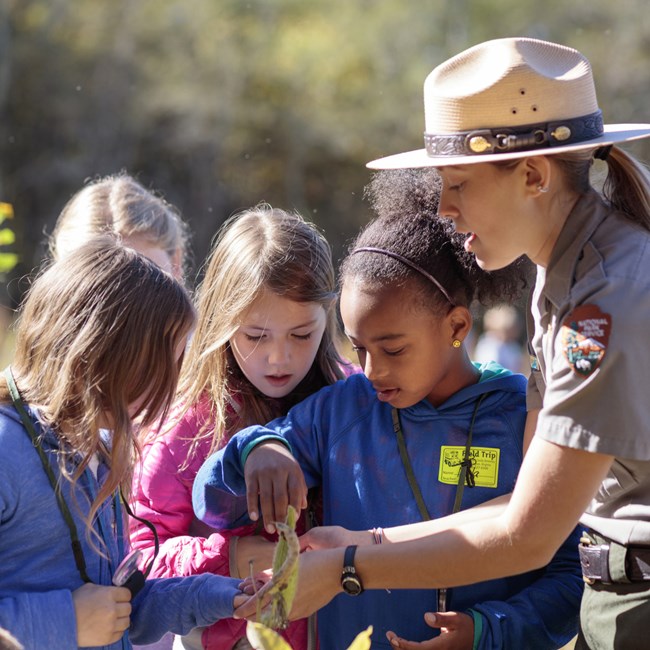
NPS
JONES: Then, in the 2010s, interpretation evolved yet again: park rangers were now urged to share agency with visitors.
LACOME: And using the word “agency” not as referred to ourselves as a government agency or bureau, but in the more broadly philosophical definition of that term as all Americans have agency or should have agency. They should have voice when it comes to their national parks.
JONES: In the past decade, the parks became even more audience-centered and more interactive. Rangers invite visitors to share their stories and relate those stories to what they see around them. Experiencing the parks has become a collective endeavor.
LACOME: If we really believe that these places belong to the American public—“find your park,” this is your park—then we can’t always be speaking for them or to them. It really needs to be collaborative. And we’re a long ways from completely figuring out what that means.
JONES: Twenty-first century interpretation is dynamic and always changing. Our national parks can be safe spaces to engage in dialogue, to explore essential questions about the challenging issues of the day--race, immigration, income inequality, climate change, environmental justice, and more.
LACOME: We can’t just sit and ignore those issues in the national parks. In fact, national parks are the places to have those conversations. They are the premier, primo places, because we can tie our understanding of history represented in these nationally significant places and landscapes to where we are now as individuals and as a society. And what does that mean for the future? What did we learn from the past and the present that helps us be better citizens, that helps us establish a more healthy planet and just society in the future? Big stuff. The big stuff, right?
JONES: The National Park Service has played a major role in the evolution of the interpretive profession. Over her 32-year career, Lacome feels she has been blessed with the opportunity to contribute to that process. Now in retirement, she hopes the NPS will continue to lead the way -- helping interpreters and visitors pose big questions. Questions we can all ponder together.
This has been “A Sense of Place: Stories of Stewardship from the National Park Service.” I’m your host, Lu Ann Jones. My colleague Betsy Ehrlich and I conducted this interview in November 2018 at the Mather Training Center in Harpers Ferry, West Virginia. It’s part of our National Park Service Oral History Project collection.
This episode was produced by Emma Courtland and Robin Miniter for the National Park Service, with help from Otis Gray. Music by Blue Dot Sessions.
Discover More
- David L. Larsen was among the most influential interpretive thinkers and trainers in the National Park Service. See Meaningful Interpretation: How To Connect Hearts And Minds To Places, Objects, And Other Resources.
- For background on interpretive methods, see Barry Mackintosh, Interpretation in the National Park Service: A Historical Perspective.
- Publications about interpretation and education in the National Park Service cover a variety of topics.
- Methods of interpretation continue to evolve, as 21st Century Interpretation: the Shift and the Practice (2014) explains.
Last updated: August 13, 2021

